We landed in the small Deoghar airport at 1.10 PM. Had been fasting since morning and had to continue the fast till we completed our darshan and puja at Baba Baidyanath Dham, one of the 12 jyotirlingas. As we walked across the tarmac to the airport building (no buses, no aerobridges), we were wondering how long the darshan would take. There are no daily flights from Mumbai, only thrice a week. We stepped out of the airport to our waiting car and the sight that met our eyes was something unique — E-Rickshaws jostling for space with cars at the Departures section of the small airport.
A short drive to our hotel, change of clothes and accompanied by our local contact made our way on an e-rickshaw to the Baidyanath Dham temple complex. Yes, cars cannot ply on the narrow streets surrounding the temple. As we entered through the ‘Poorvi dwar’ or eastern gate, we learnt that there are 4 gates to the temple complex.
An ancient temple, whose origins are shrouded in mystery. One of the 12 jyotirlingas, where Lord Shiva manifested Himself as a pillar of light. Legend has it that Ravana undertook a severe penance and started chopping off his heads one after the other, as a sacrifice. When 9 of the 10 heads were chopped off, Shiva appeared before him, restored his nine heads and granted him a boon. Ravana’s request — Lord Shiva in the form of a lingam should accompany him to Lanka. Having granted a boon, Shiva could not go back on His words. He however laid down a condition. He would accompany Ravana to Lanka in the form of a lingam but, if Ravana was to put down the lingam on the ground anywhere for whatever time, He would stick to that location and cannot be moved further. Ravana agreed. All the gods and devas were stunned that Shiva would move from Kailash to Lanka. They hatched a plan. Varuna (some versions say, Ganga) entered Ravana’s body, as he was carrying the lingam, making him feel the need to relieve himself. He looked around but could see nobody to whom he could entrust the lingam. He assumed Vishwa Roopa from the place on Trikut parvat, where his Pushpak vimana landed and in the distance, he could see a small shepherd boy. Ravana requested the boy to hold the lingam, while he relieved himself. The boy who was Vishnu, in disguise, agreed but on the condition that he (Ravana) should come soon and if he does not even after three calls, he could place the lingam on the ground and go away. Sur enough, Vishnu called thrice but the roar of the water inside Ravana, drowned the voice. The shepherd boy placed the lingam on the ground and walked away. When Ravana returned, he tried his best to move the lingam but failed. He realised that Vishnu had foiled his plans. The lingam is said to bear marks of scratching, chipping as Ravana used all his strength to move it.
Once inside, our guide took us to a ‘panda’ or priest. There was a huge crowd and we were suggested to opt for the special darshan paying Rs.300 per head. What was interesting was the names and contact details of different pandas in the temple complex, all round.
Can one have darshan without the pandas’ help? You sure can, but it going to be extremely difficult, as we saw later. The panda instructed his assistant to go and get the special darshan tickets, even as he chanted mantras, applied sandal paste and kumkum on our foreheads and handed over small containers of Gangajal, flowers and leaves to be offered to the Lord. The pandas have separate lockers wherein we can keep our valuables such as jewelry, wallets and mobiles, as pickpocketing and chain-cutting are big threats in the crowded queues, especially while entering the sanctum sanctorum.
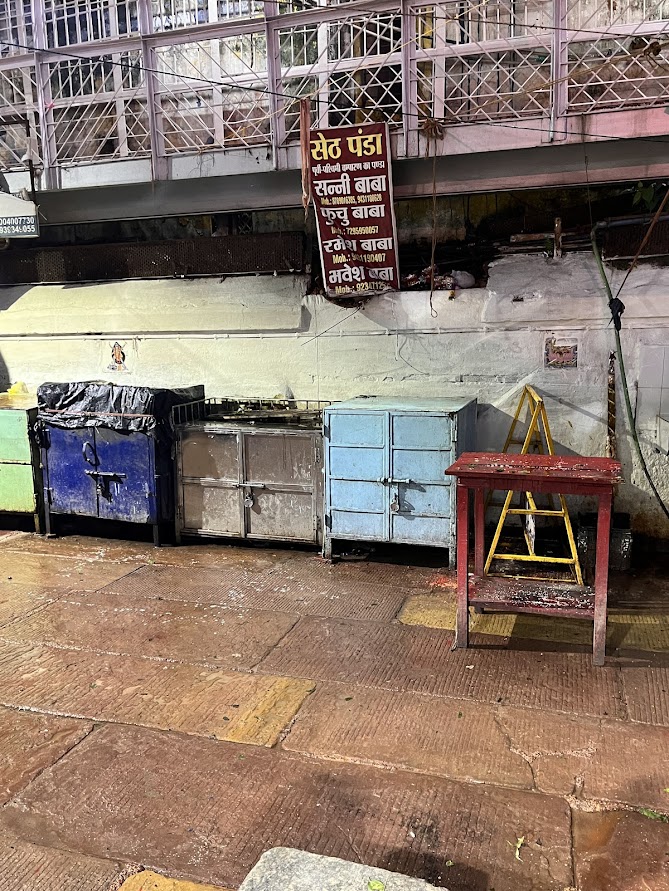
We did not take up the locker offer and said we would be doubly careful in the queue. We were told that it would take a little over an hour in the queue and as we would get close to the sanctum, the panda’s deputy would join us and help us with the darshan. It was raining now as we were handed the Smart card for joining the special darshan queue, much like in a metro station.
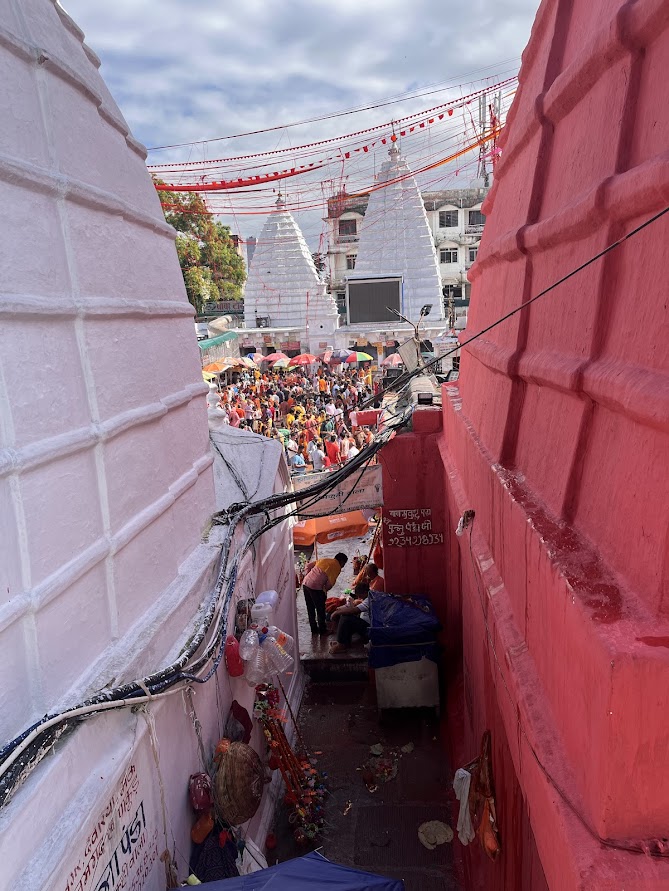
The line wound its way slowly amid chants of ‘Bol Bam’ in an elevated pathway constructed across the circumference of the courtyard. In the nooks and crannies alongside, we could see plastic bottles and other items dumped and adding to the wet ground, it did not present a pretty sight. Now, we were at a point where, the common darshan and special darshan queues merged and the passage went downwards towards the temple sanctorum. Narrow passage, two lines merging, pushing, jostling for position, while taking acre of our valuables, it all began. As we entered the temple building, our panda’s deputy materialised out of nowhere and like a bodyguard, navigated us towards the sanctum. The sanctum is small and dimly-lit with a passage that one has to slightly bend through to enter. The passage is just wide enough to accommodate one person going in and the other coming out. Commotion as pilgrims pushed their way through with the support of the panda team. Realised that without that support, entry into the sanctum could be even more difficult.
Coming to the Shivalinga itself, the speciality of Baidyanath Dham, is that, one could bend down, touch the Shivalinga and also pour the Gangajal over it and seek blessings. Easier said than done. As one bends down, there is considerable push from behind and stronger pandas, tend to push pilgrims away in a bid to push their own clients upfront. A real mad rush. Somehow, we managed to touch the Shivalinga and pour Ganga Jal over it, thanks to our panda team member’s physical support. Getting out of the sanctum also requires an effort and some strong shoulders to push through the traffic.
Another peculiarity here is that the temple is also a Shaktipeeth, a place where Sati’s heart fell and both the Shivalinga and Shakti are housed in the same sanctum. While the lingam is placed on Sati’s heart, Shakti is represented by a white line surrounding the Shivalinga. In other jyotirlingas where there is a Shaktipeeth too, Shakti is worshipped in a separate shrine inside the temple complex. Phew! We managed to come out after a fleeting darshan and quick puja, with our valuables intact.
Our panda Kundan too had joined us as we walked back to his seat. He suggested a ‘thread/ribbon-tying’ ritual, pointing to the numerous red ribbons connecting the shrines of Baba Baidyanath and the one of Parvati Devi. He mentioned that we make a wish and tie this thread, the wish would come true. We decided to go ahead with the ritual. The cost -Rs.1200, that included the cost of the ribbon bundle and charges for the person climbing up to tie the same.
The person climbs up to the tower of the Baba Baidyanath mandir, ties one end and lets loose the other end for us to carry it till the Pravati mandir. He then comes down, picks up the ribbon’s open end, climbs up the Parvati mandir and ties up the other end. Connection created between Shiva and Parvati.
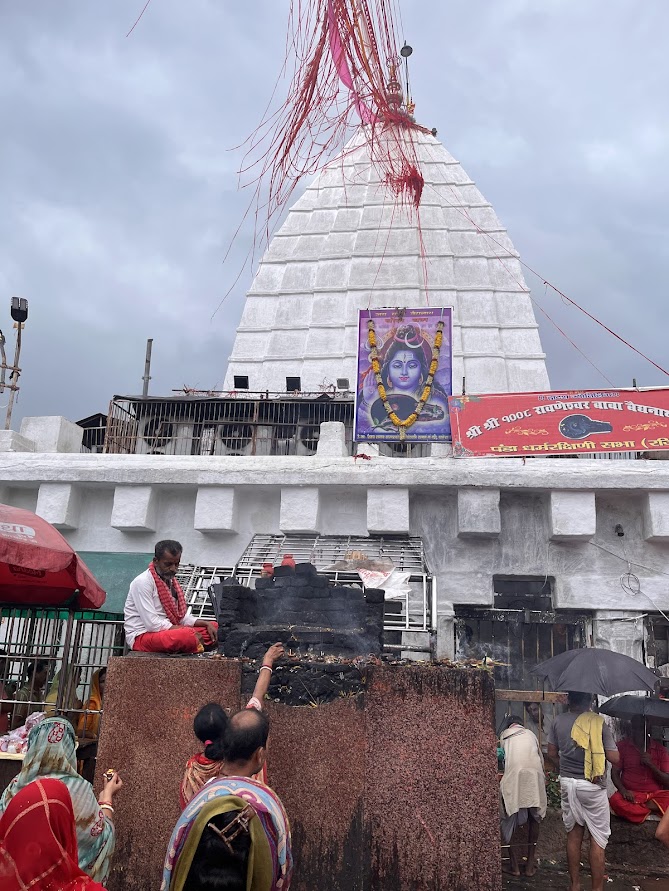
Another standout feature here is that the temple tower does not have the customary Trishul, but a five-pronged ‘Pancha shul’. There are 21 other smaller shrines around the Baba Baidyanath temple, that includes Kali, Ganesh, Laxminarayan, Kal Bhairav, Anand Bhairav, Saraswati Tara and many more. Had a quick darshan at the Parvati temple and other smaller shrines, before moving out to break our fast — our first meal of the day, around 6 PM.

In the evening of the following day, we were again at the Baba Baidyanath temple complex, this time with my local friend in tow, to view the Shringar puja on the big screens installed in the courtyard of the complex. It was raining pretty heavily, as we walked through the bazaar adorned with small shops, all round the temple complex.

It was a very long wait in the rain. We could see the groups of ochre-robed kanwars carrying Ganga Jal in pots slung over their shoulders, circumambulating the main temple with chants of ‘Bol Bam’, ‘Bol Bam’.
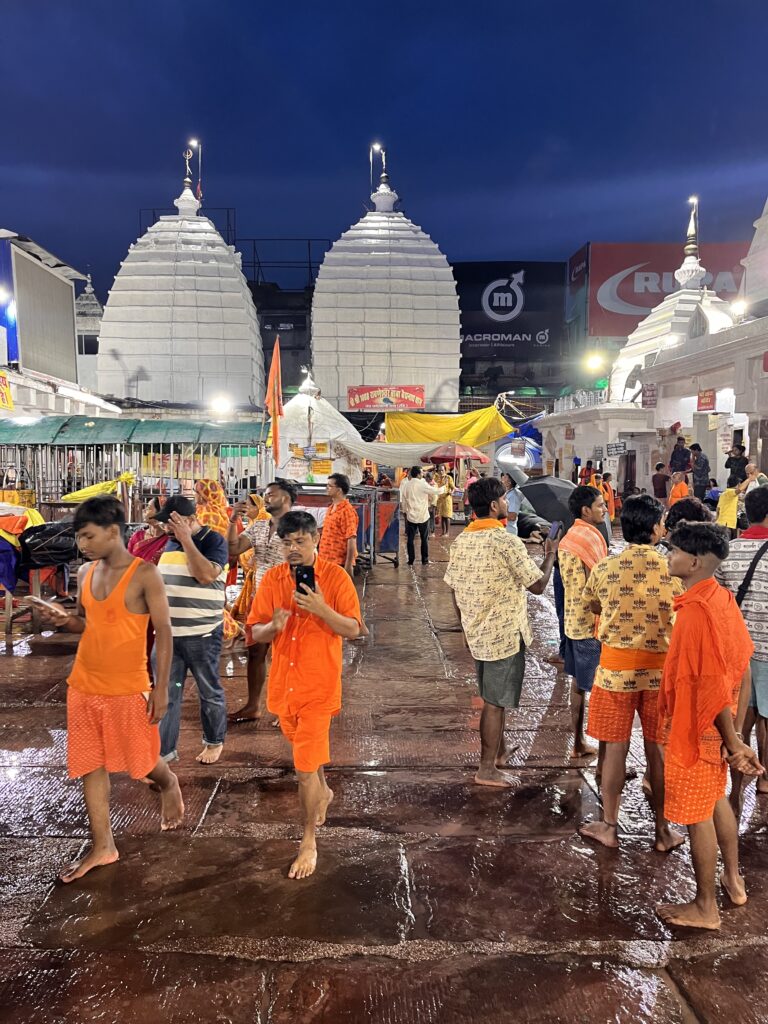
The chief priest for the day performs puja first at the Kali temple and then accompanied by his team and all the puja material walks over to the Baba Baidyanath shrine for the Shringar puja. My friend informed me that an adornment of flowers comes in daily from the prisoners in the local jail and carried over by the police. The big screens had come alive now and what do we see? The priest was intent on collecting Dakshina from all those assembled inside the sanctum sanctorum before beginning the Shringar puja. This, in full view of all, went on for over 10 minutes, even as the evening aarti started in the courtyard. Quite disappointed with this. My friend informed me that the administration of the temple had been taken over by the government and hence the priests had to crave Dakshina.
As we walked gingerly past the bulls lounging there, Kishore pointed to the Laxminarayan shrine and asked if I knew why the shape of the tower was different from that of the others. I pleaded ignorance. He explained that, the legend goes as follows — Vishwakarma, the divine architect, who was building the Laxminarayan temple tower, had made it taller than Baba Baidyanath temple tower. An angry Shiva, with one stroke of his hand, knocked down the upper part of the tower, and hence, to this day, this shrine does not have a conventional tower, narrowing towards the top. Stepped out of the Simha Dwar on to the lane leading to the Shiv Ganga Pond, which Ravana is said to have created by pressing his thumb on the ground.
All this in the evening of Day 2. If you are wondering what we were doing in the earlier part of the day, here goes ………
8 AM: We started for Basuki Nath temple, 45 kilometers away from Deoghar, in Jarmundi town/village. It is said, a visit to Baba Baidyanath is complete only when, one visits Basuki Nath too. It was raining heavily, and the roads were not great. Passed the small town of Ghormara, the Peda capital. Why? It is lined with peda shops, big and small on both sides of the road. Tourists while returning from Basuki Nath, buy peda here, we were told. Took us around 1 1/2 hours to reach the bazaar adjoining the parking lot. All along we could see huge billboards welcoming the pilgrims ( kanwars) who would descend on this town in the next couple of days for the Shravan Mela. Temporary stalls were also being put up.
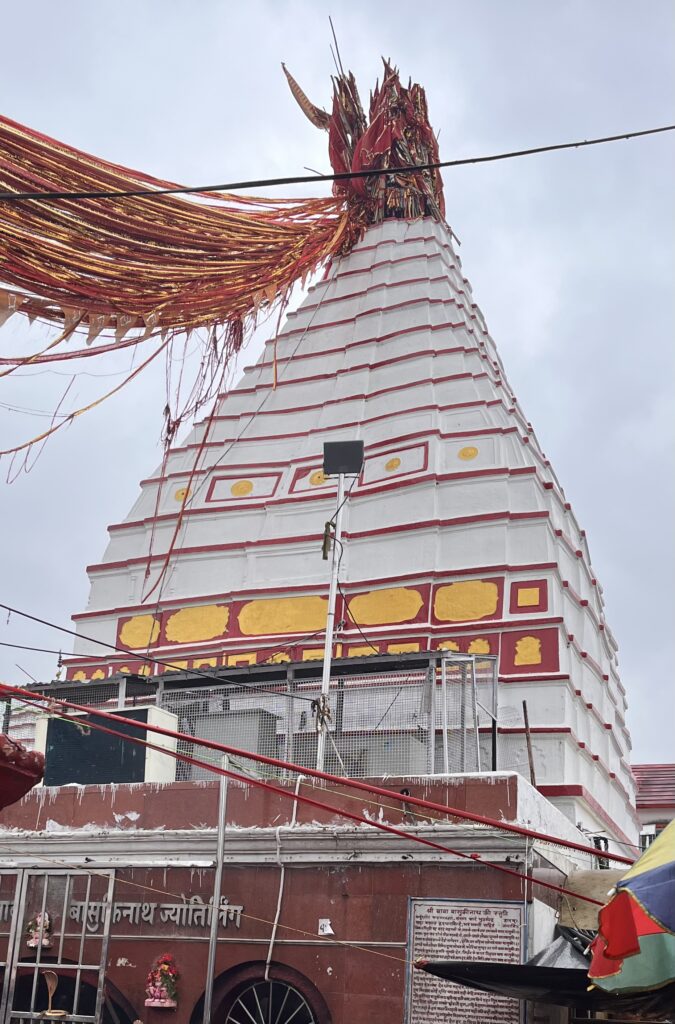
A short walk into the temple complex, we washed our feet at a handpump and entered the compound. Almost similar in style and structure to Baba Baidyanath. The main shrine of Basuki Nath and other shrines, the Devi included, adding to around 30. Not much of a crowd. We took the common darshan and in a matter of a few minutes, were bowing before the Basuki Nath lingam and touching it in prayer. Next was the Devi mandir and, as the rain intensified, we were quick to move out.
One of the oldest temples in Jharkhand, the current structure is said to have been put up by a tribal chief, Basaki Tatme. Legend has it that during the time of the Amrit Manthan, Basuki the King of serpents and other snakes used to pray to a Shivalinga at this spot. Hence the name Basuki Nath. An alternate legend has it that, a poor farmer named Basu, who resided here prayed to Shiva for bringing in rains to the drought-hit region and Shiva not obliged but also decided to stay permanently here as Basuki Nath. Had brunch at the Marwadi Basa in Vidhya Bhavan. Homely food, no onion, no garlic, but the ambience could have been better.
Rains continued unabated and, hence we dropped the idea of visiting Trikut Parvat, the 3 hills on one of which Ravana is supposed to have landed his Pushpak Vimana and scoured the countryside to see if someone could hold on to the Shivalinga, he was carrying to Lanka. (Go back to earlier parts of this post). Any which ways, we couldn’t have gone to the top of the hill, as the ropeway services have been discontinued, following a major accident in 2022. Clicked a few pictures from afar, as we headed back to Deoghar.
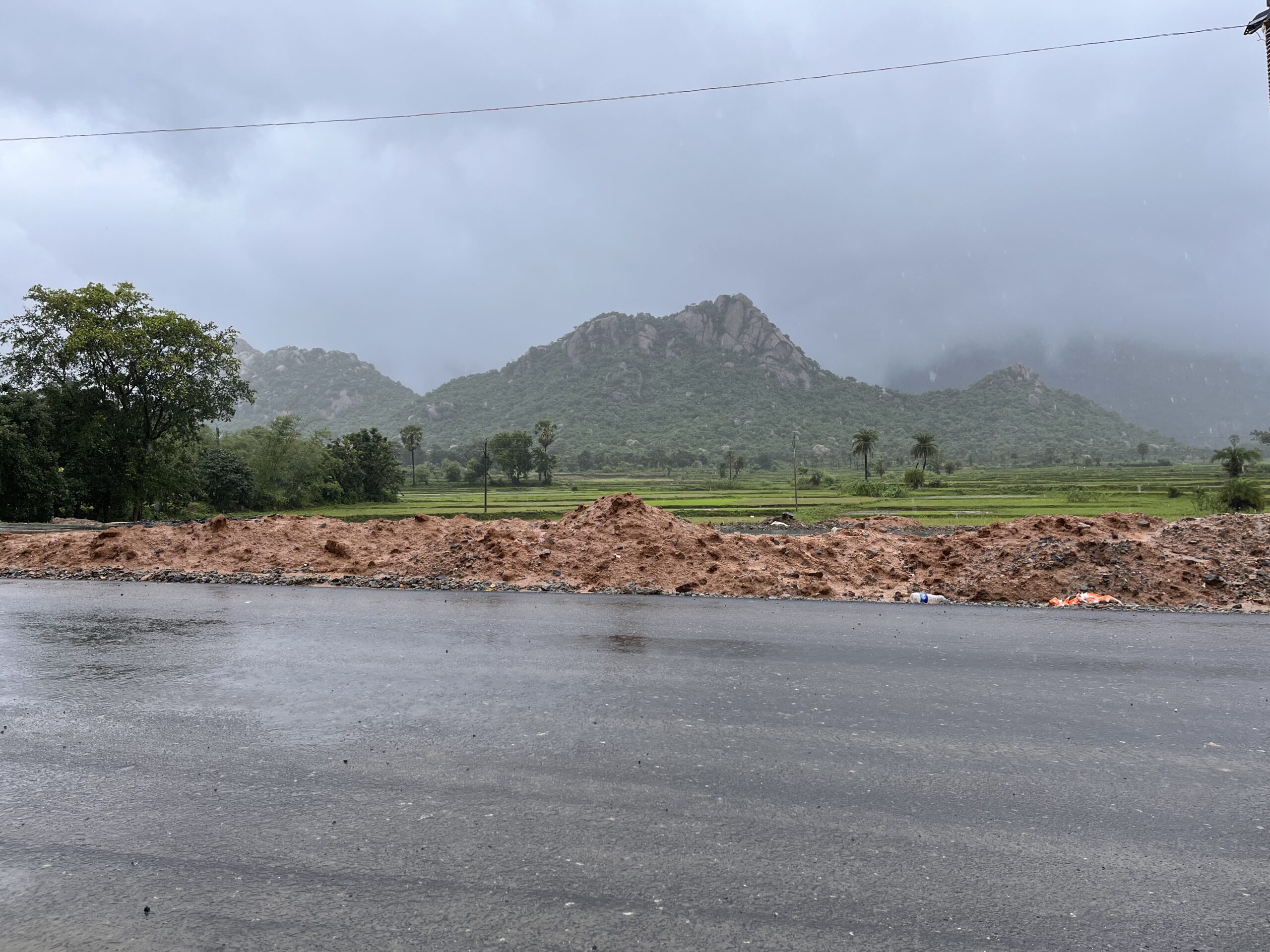
Day 3: Time to leave for Mumbai. En route to the airport visited the Naulakha mandir. As the name indicates, it was constructed in 1940 at a cost of Rupees nine lacs. The temple has two shrines, one dedicated to Radha and Krishna and the other one to Balananda Brahmachari. It was built by Queen Charushila of Pathuria Ghat, Kolkata. Clean, serene atmosphere.
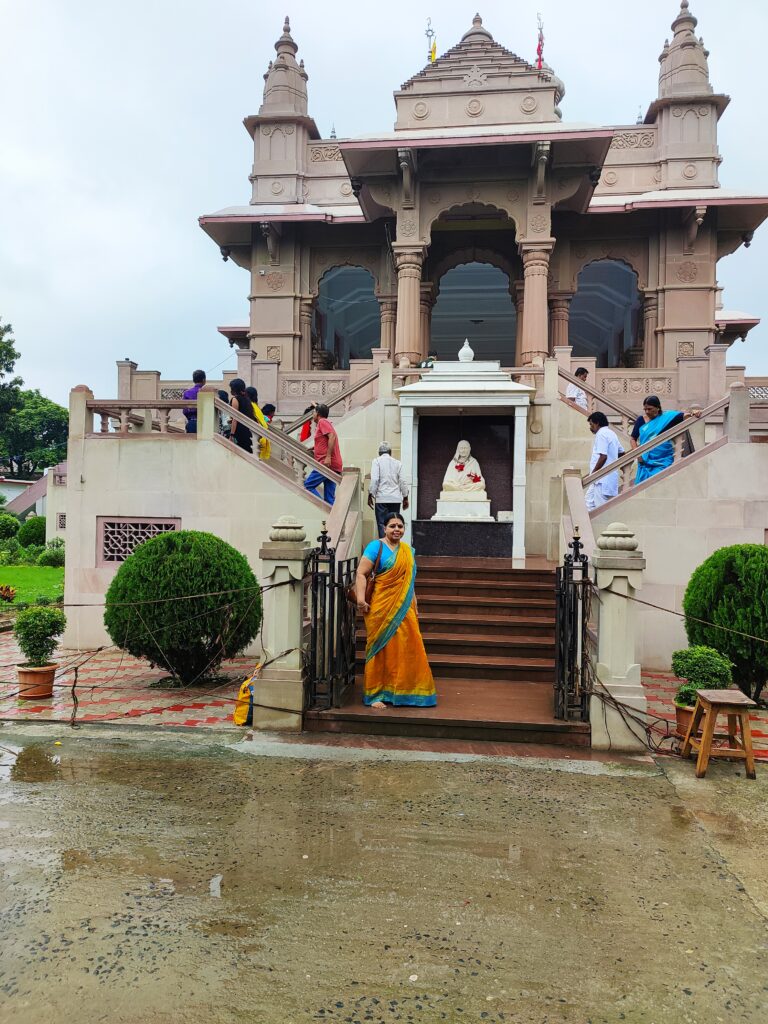
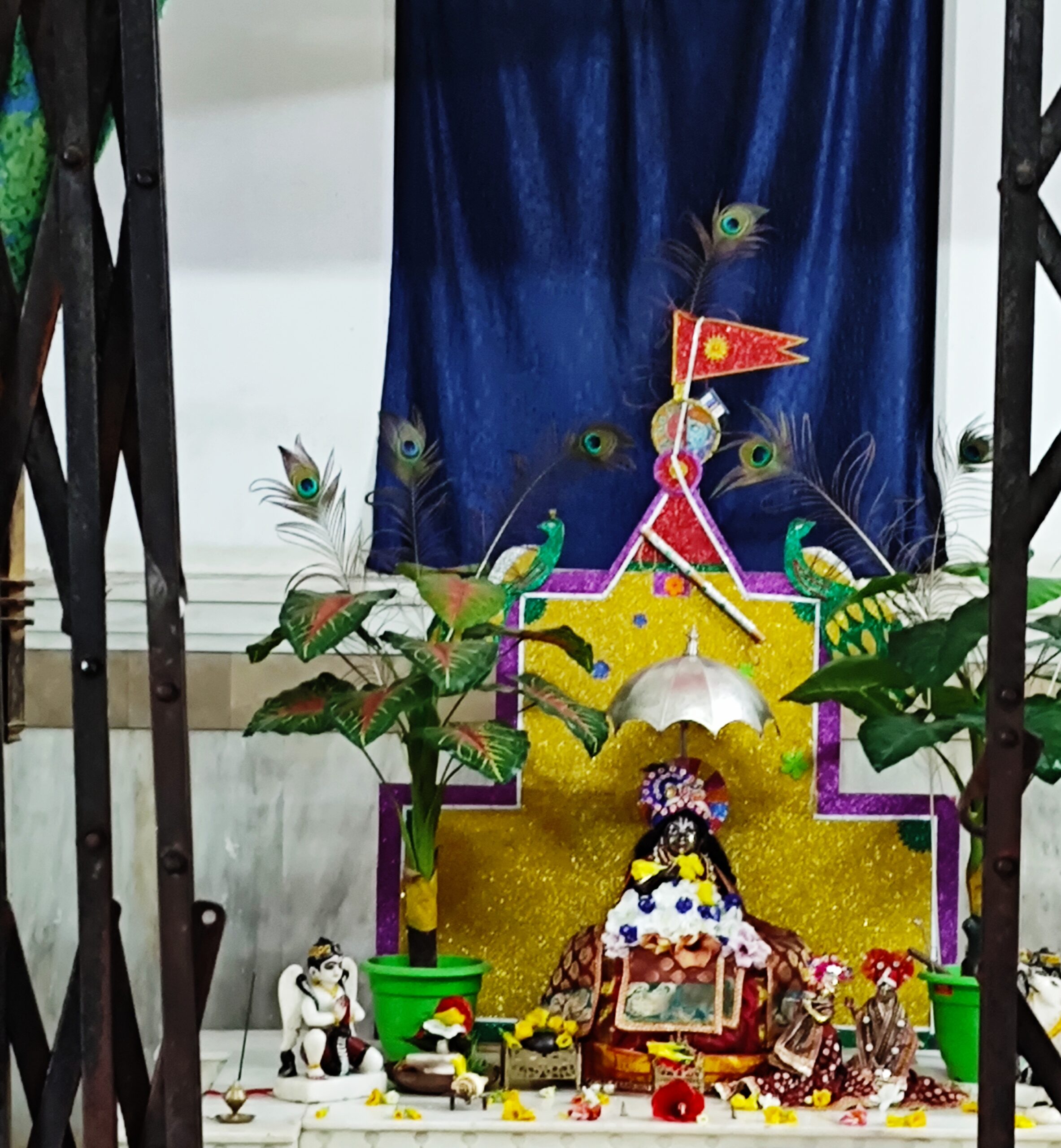
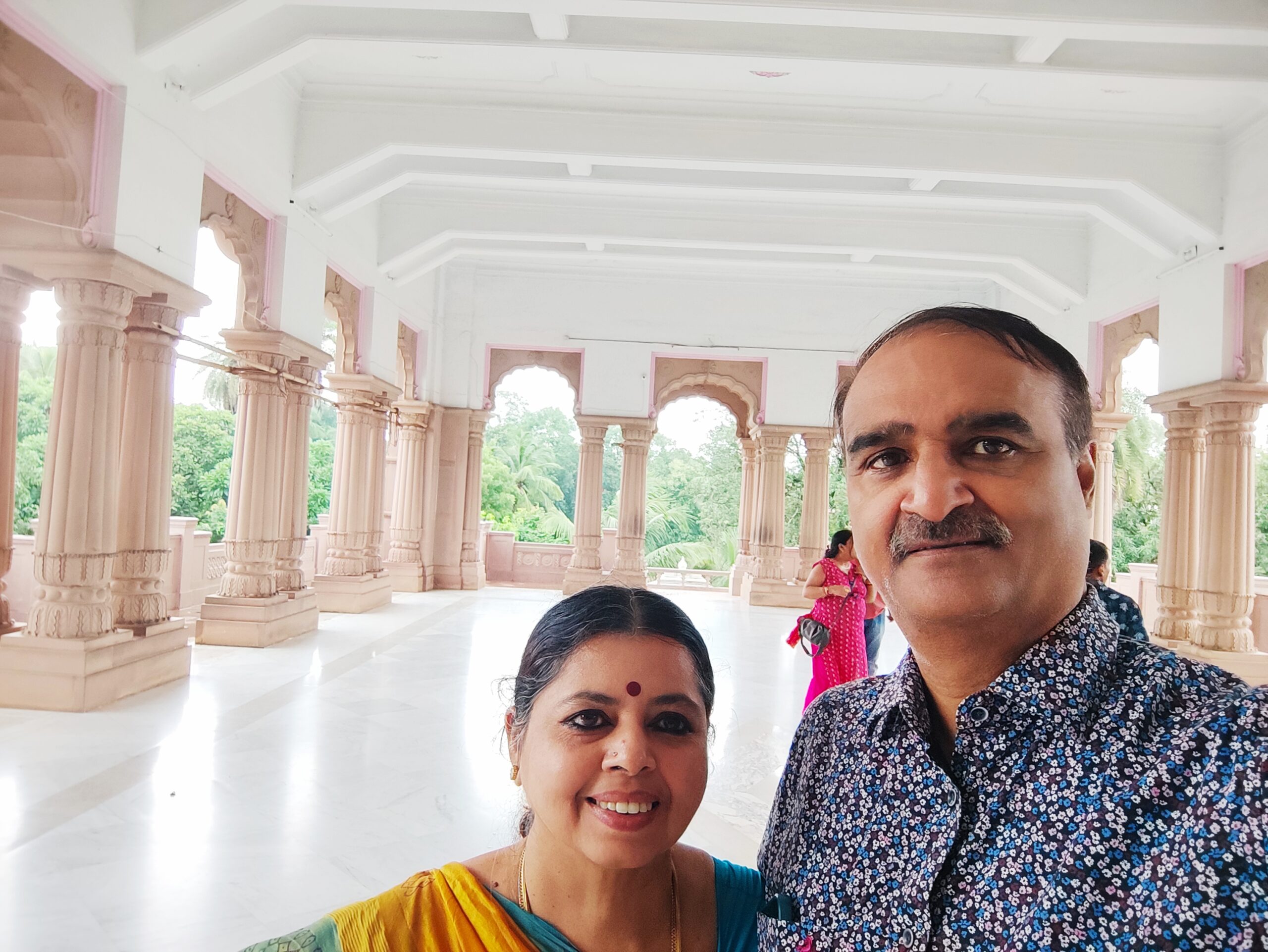
It was till raining as we reached the airport after a fulfilling 3 days in Jharkhand. Our ears still echoed with the chants of ‘ Bol Bam’, ‘Bol Bam’.
Discover more from BalasBroadcast
Subscribe to get the latest posts sent to your email.
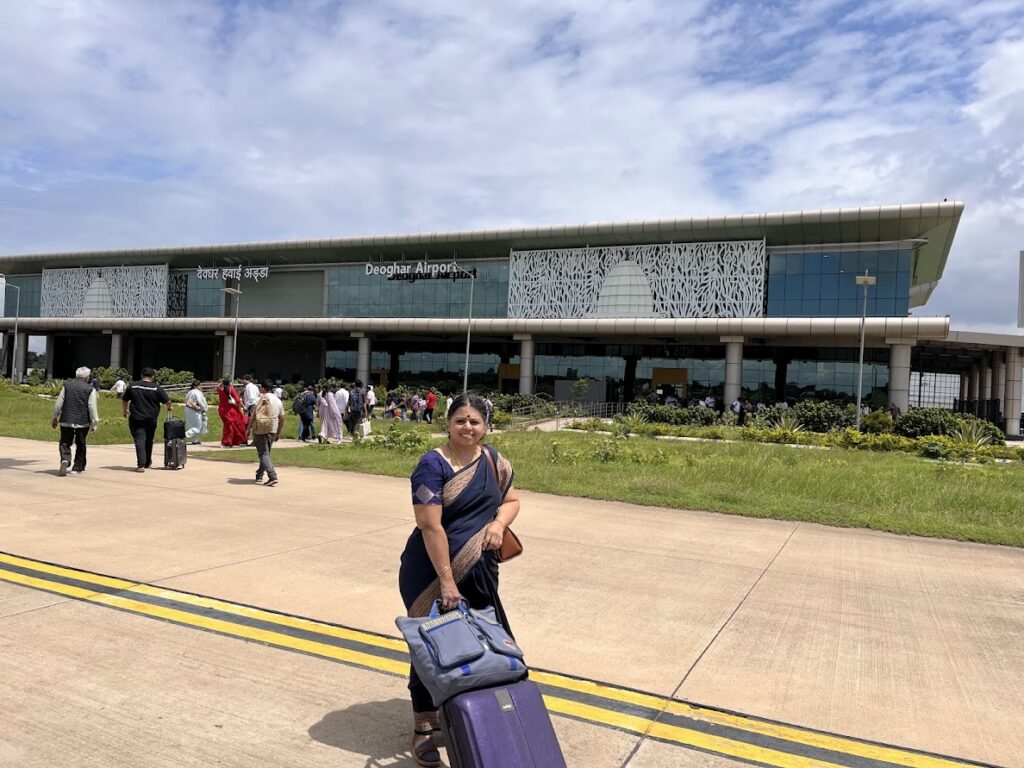
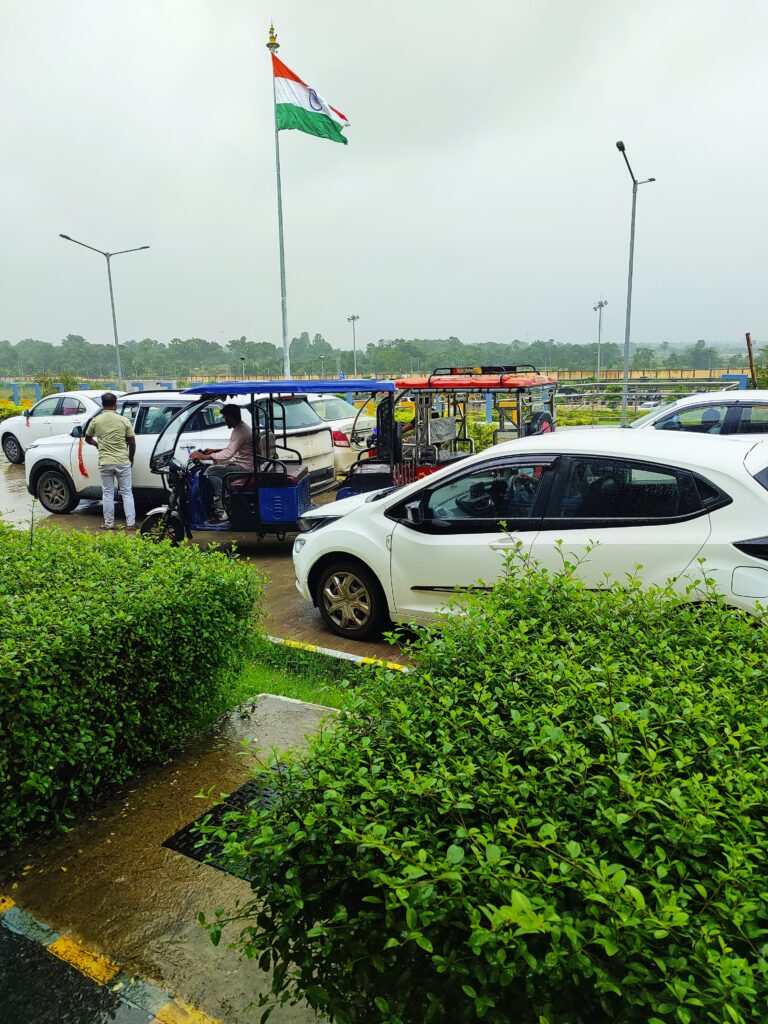
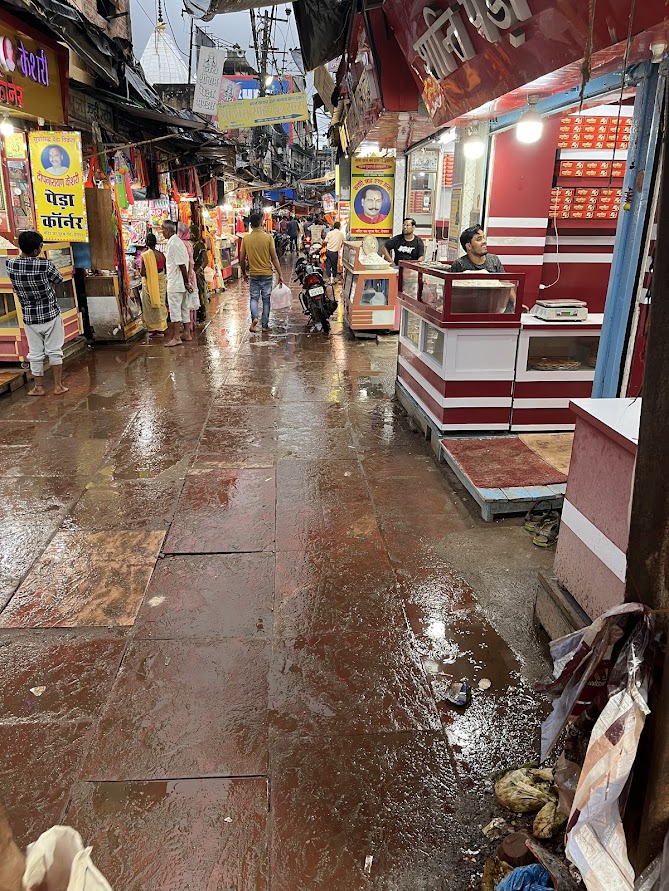
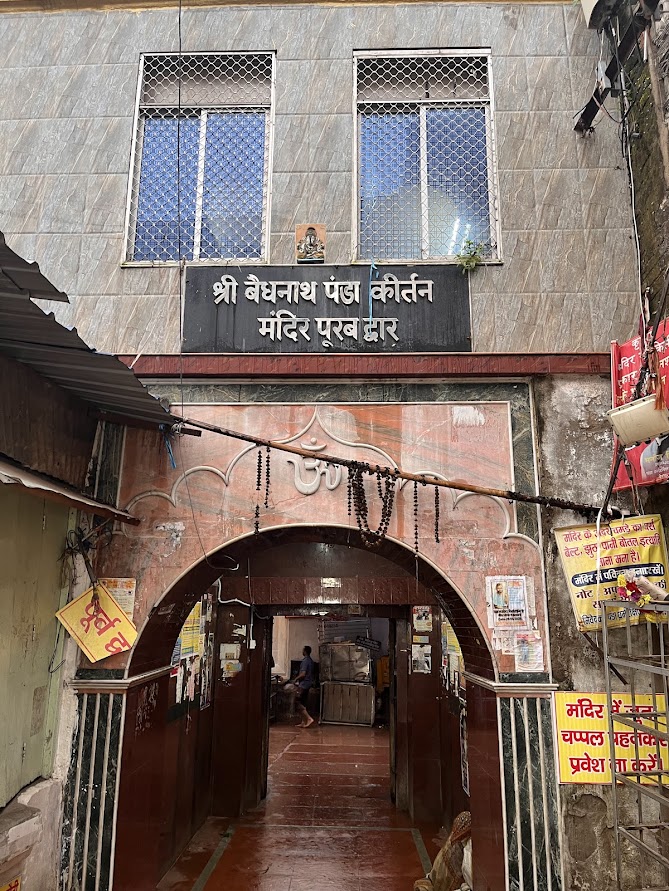
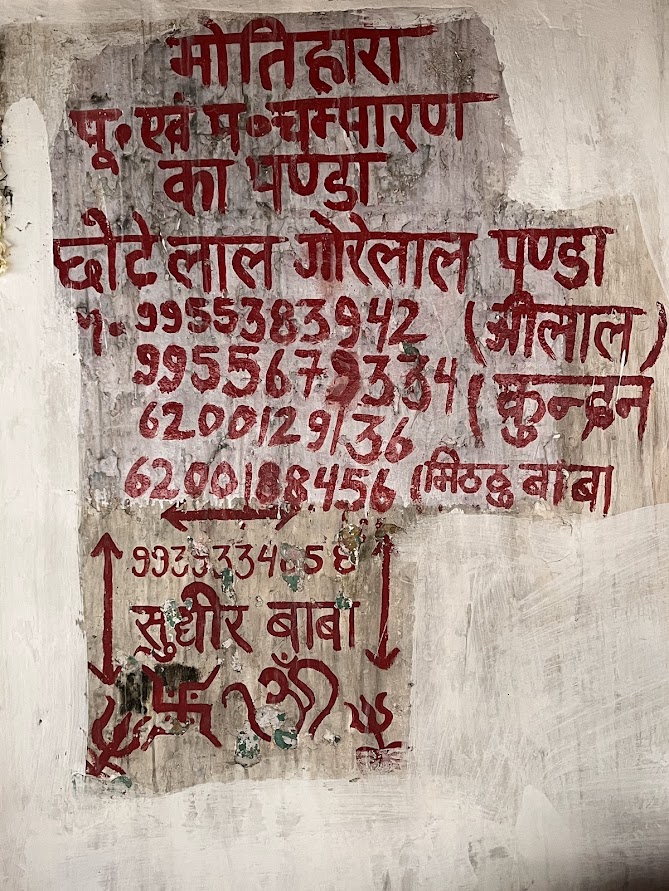
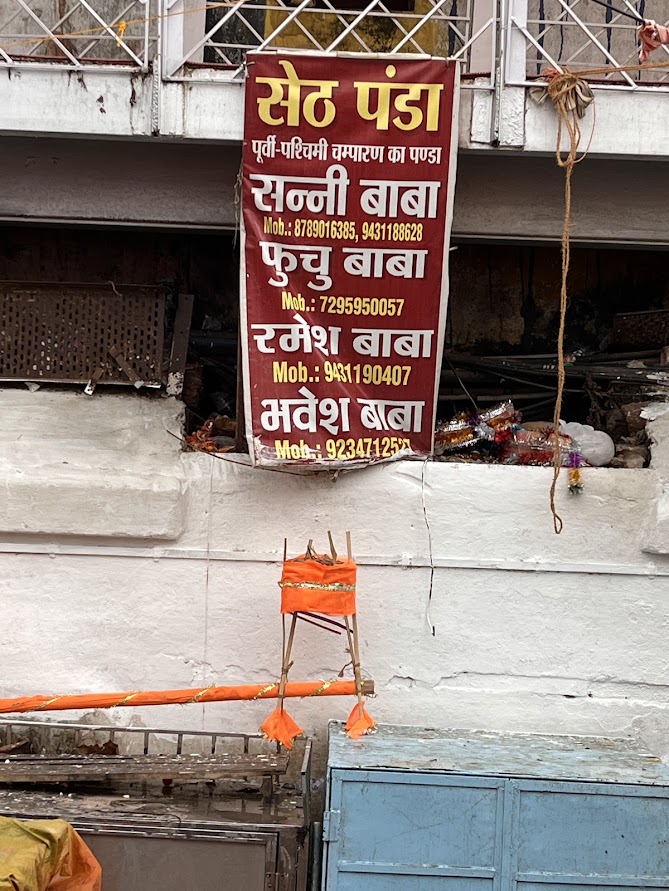
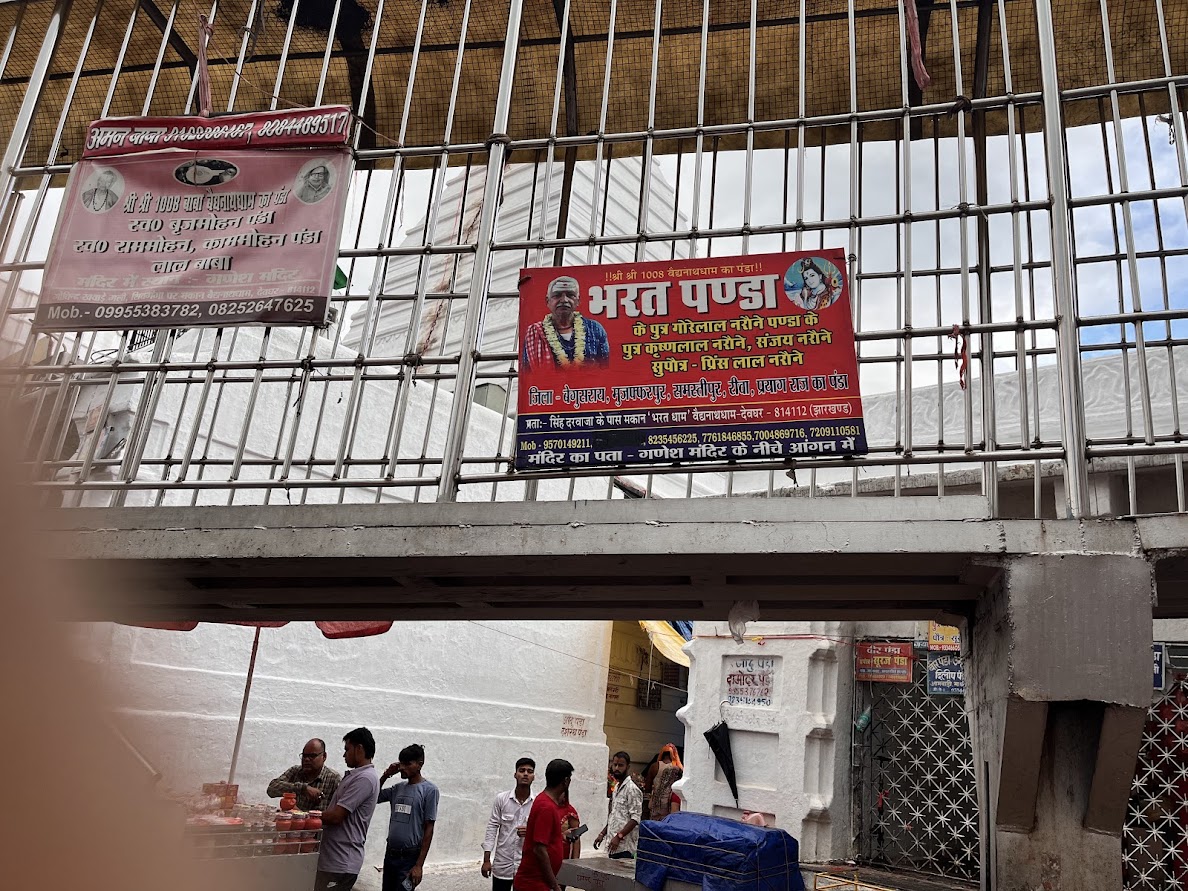
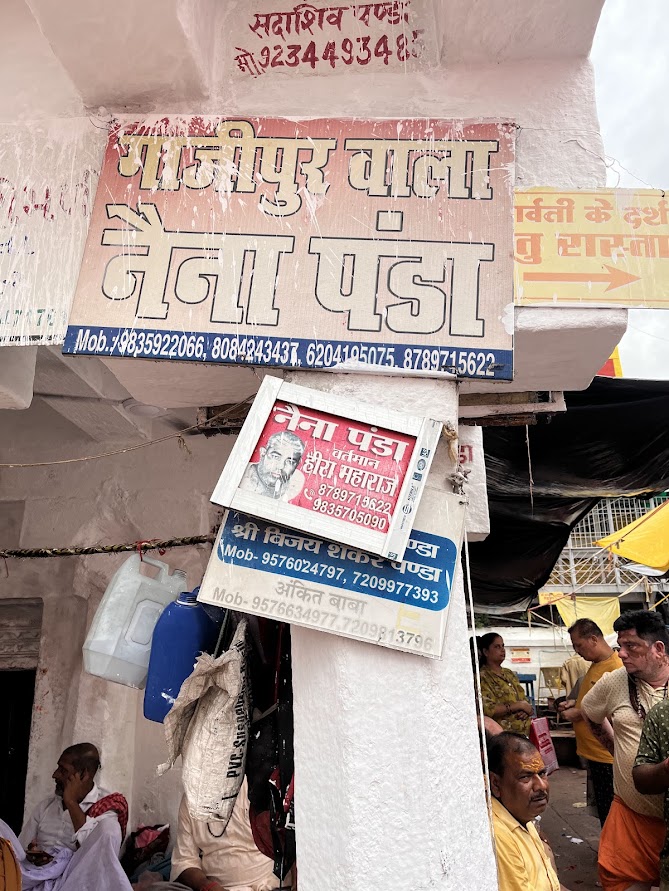
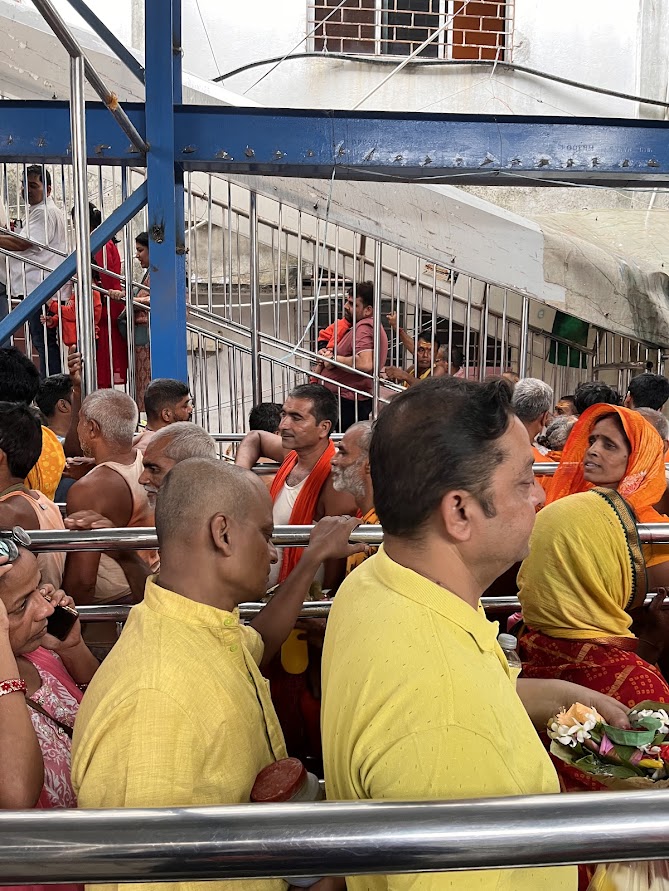
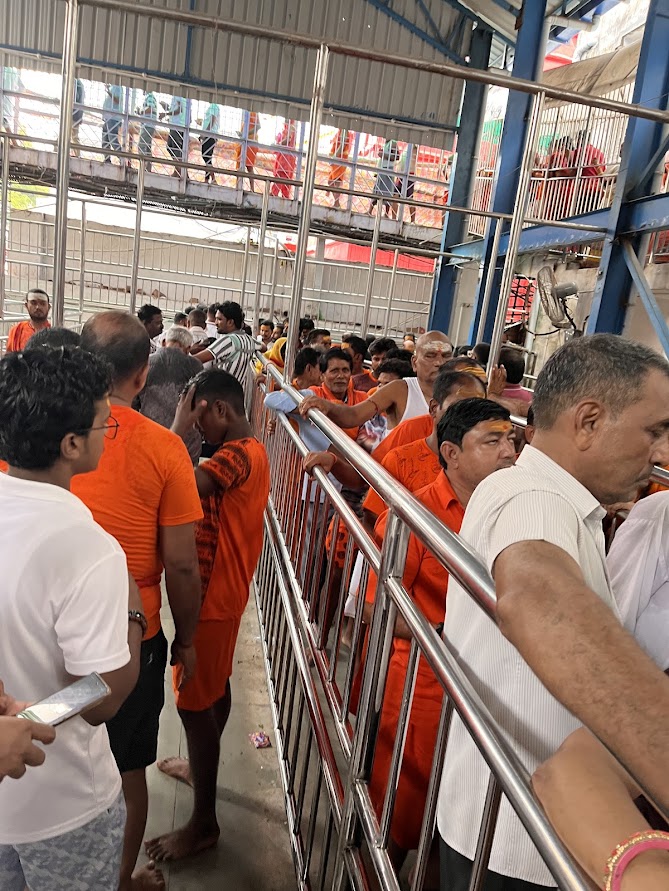
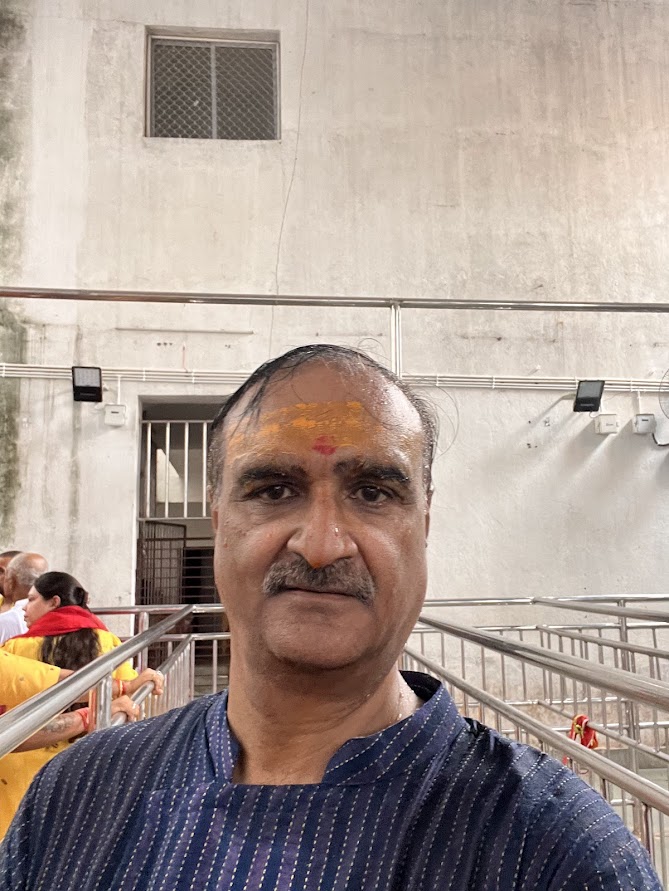
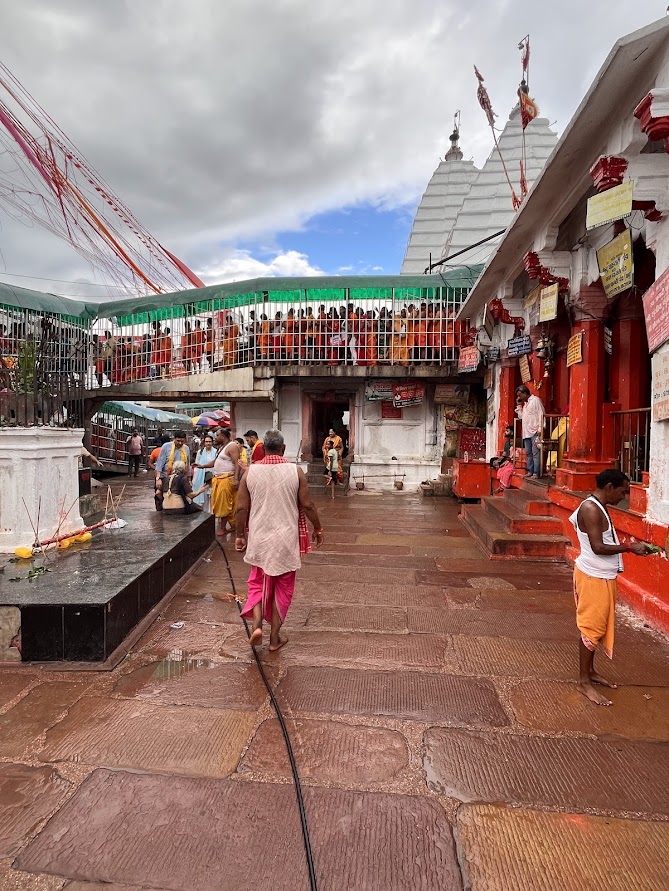
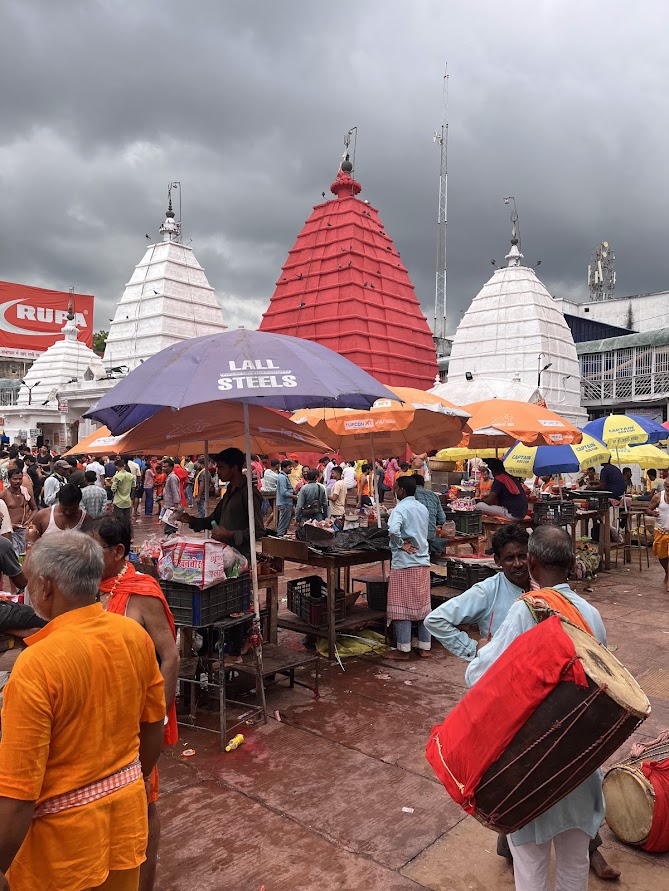
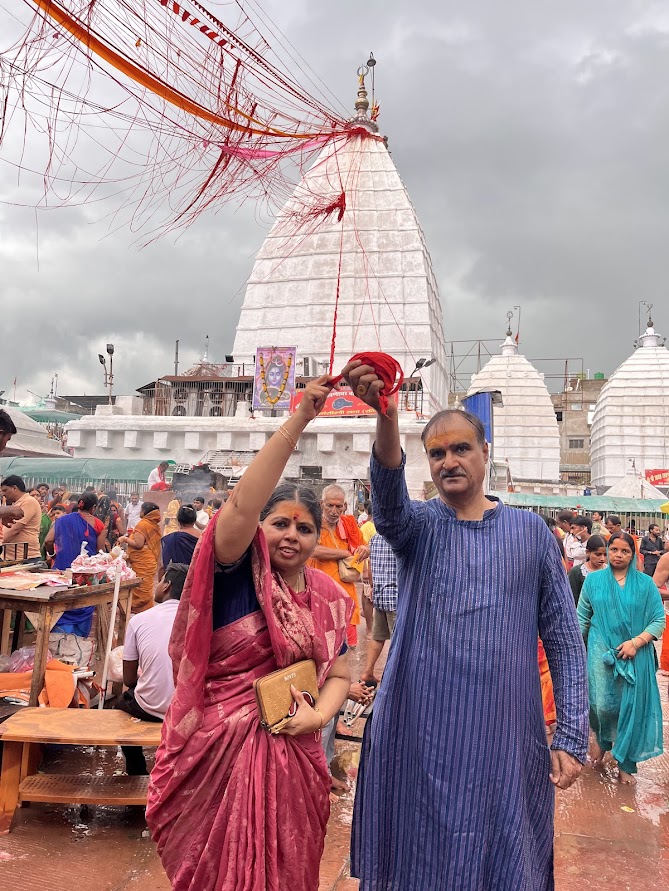
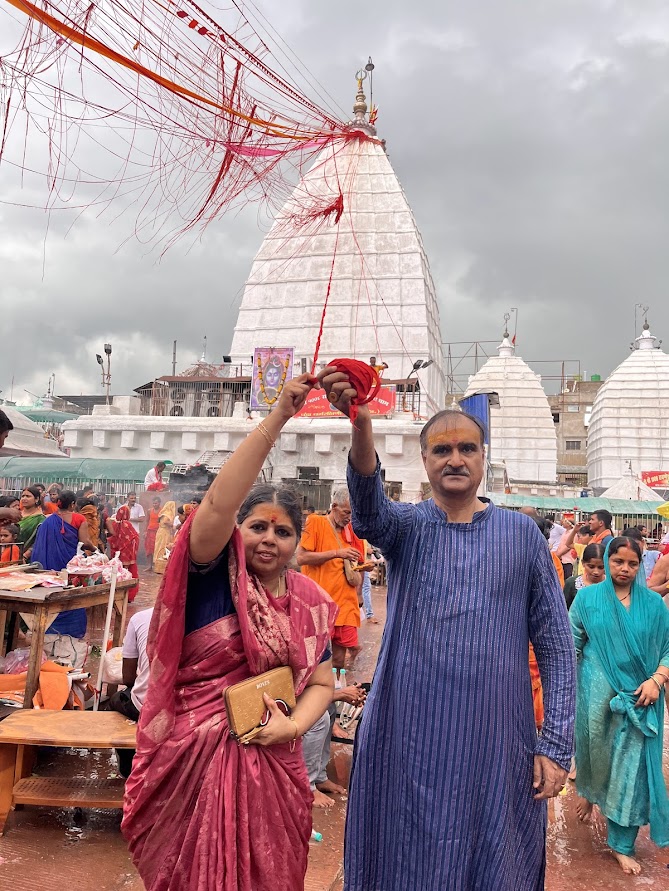
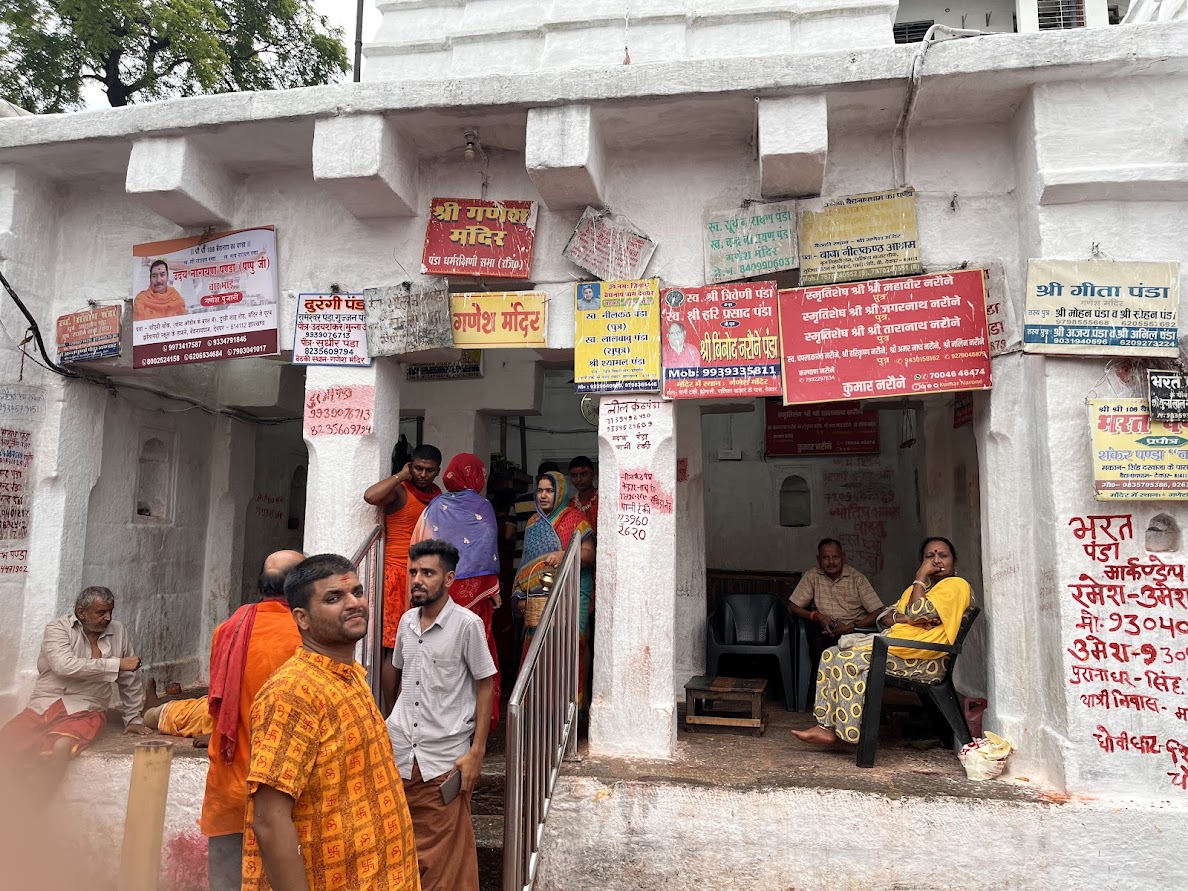
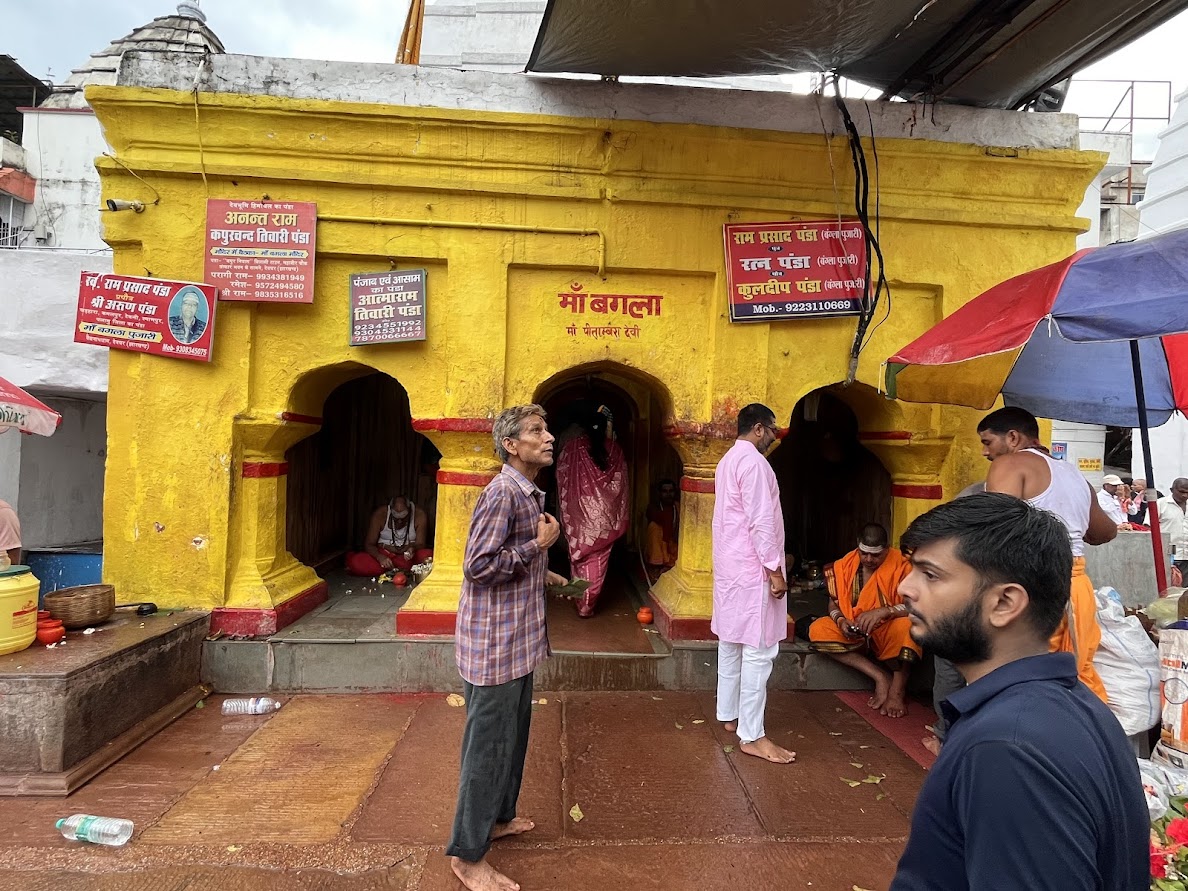
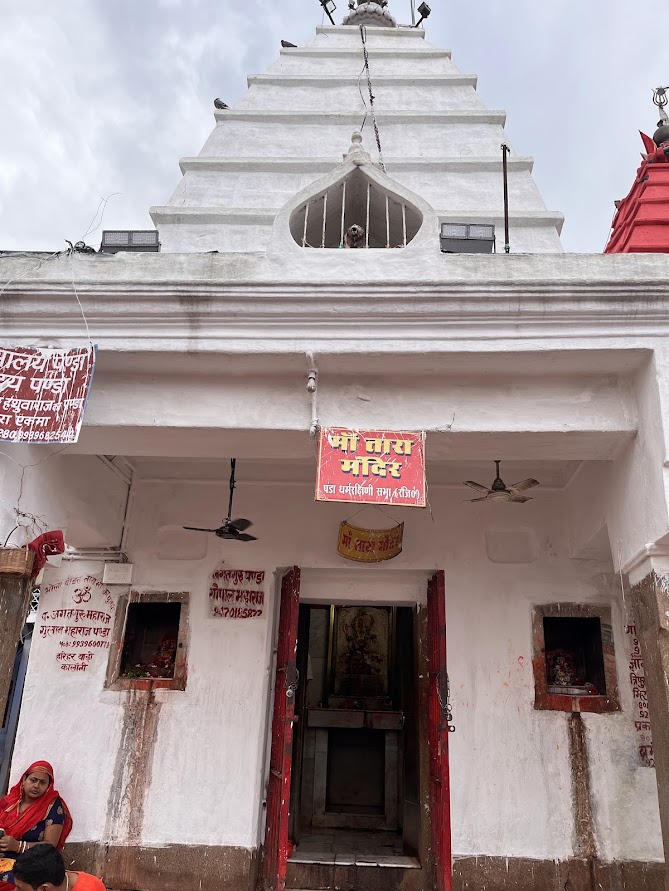
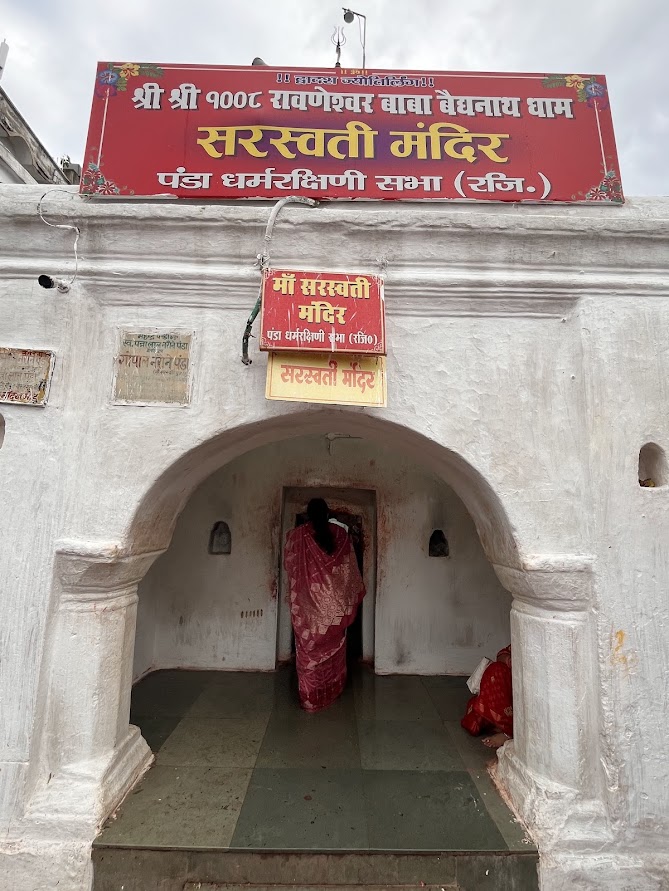
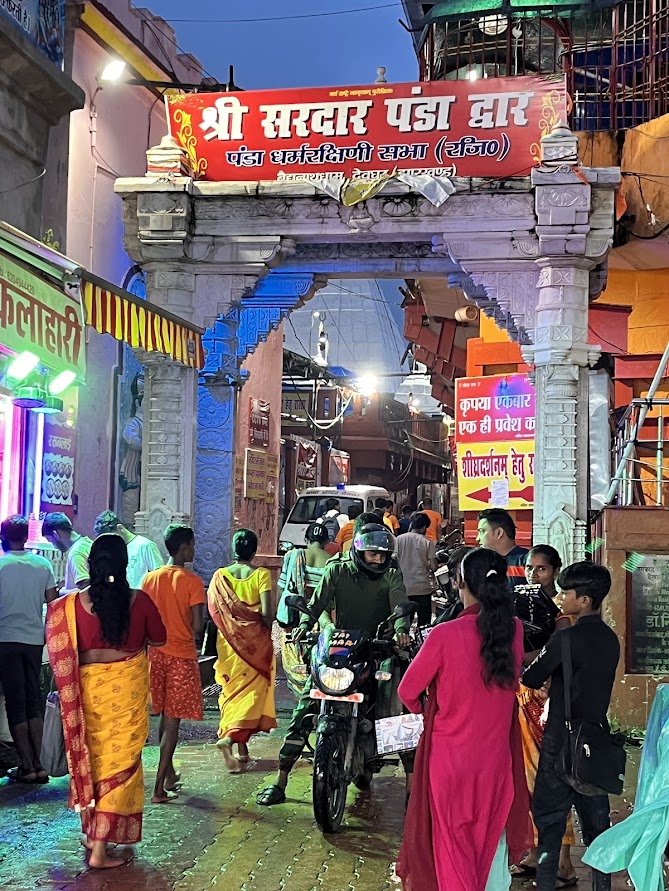
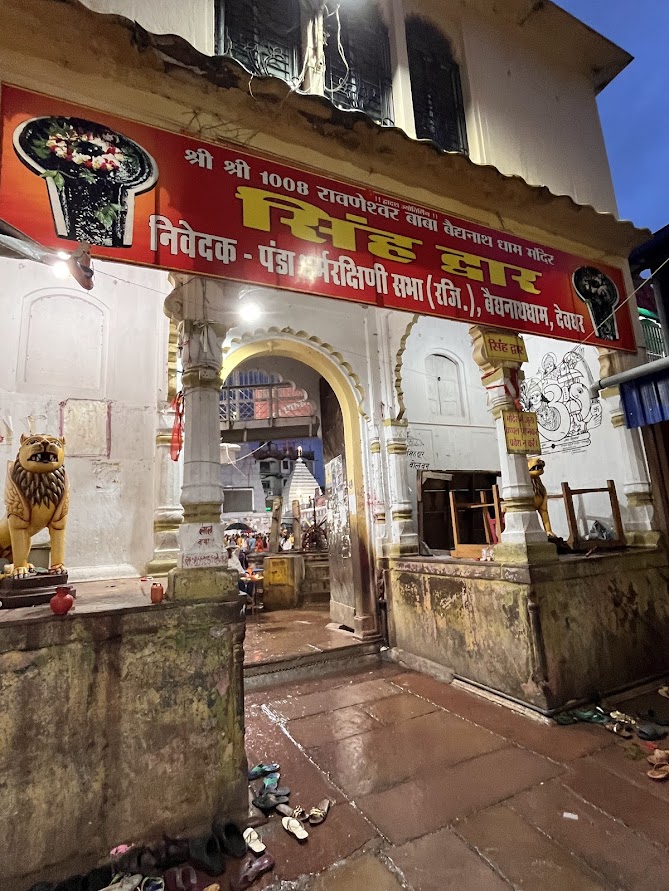
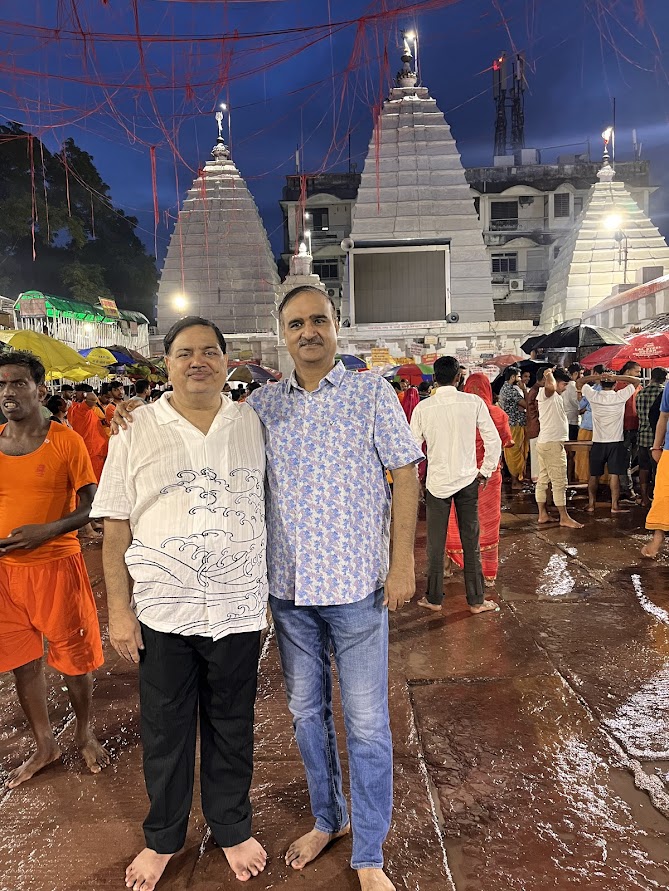
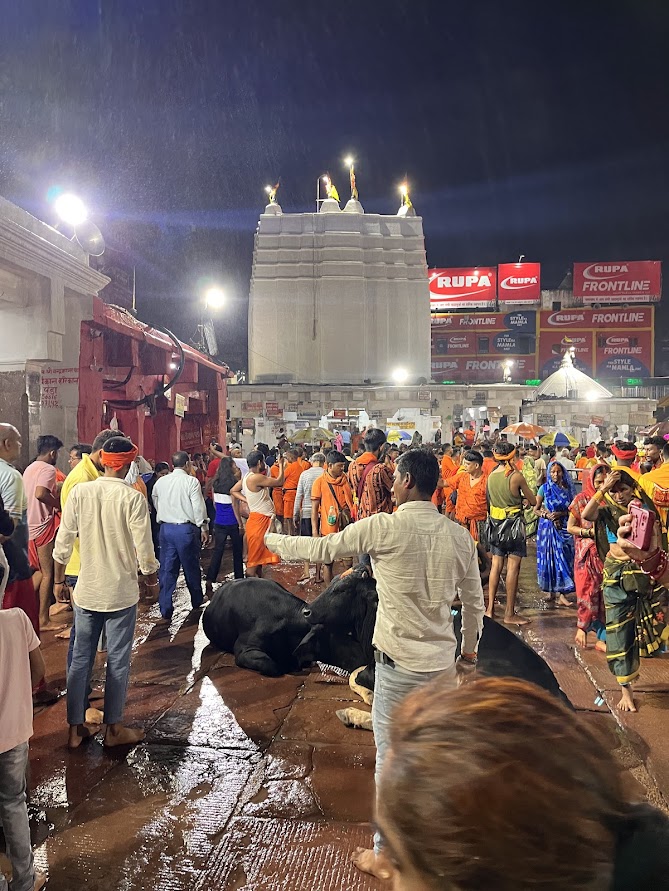
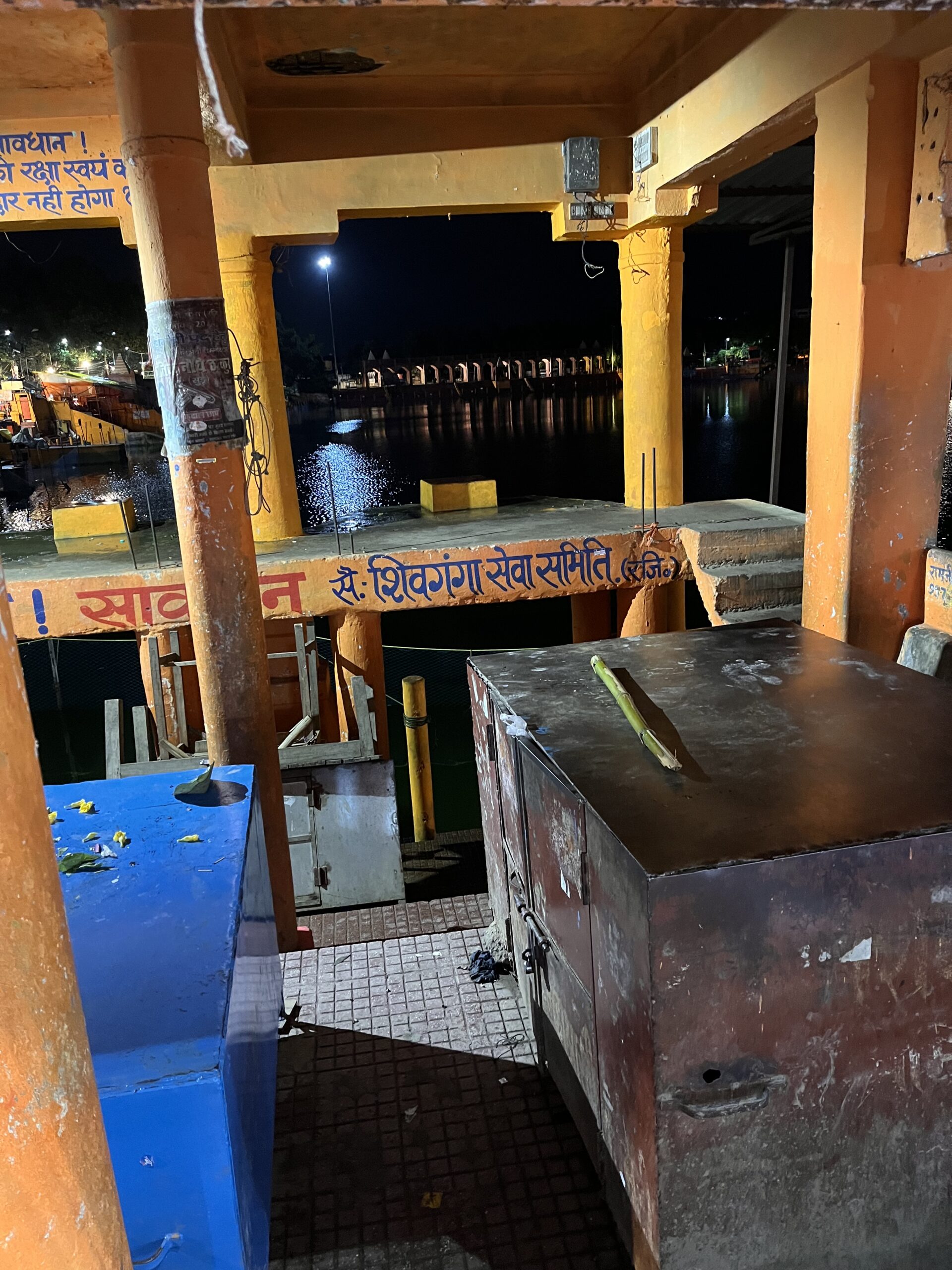
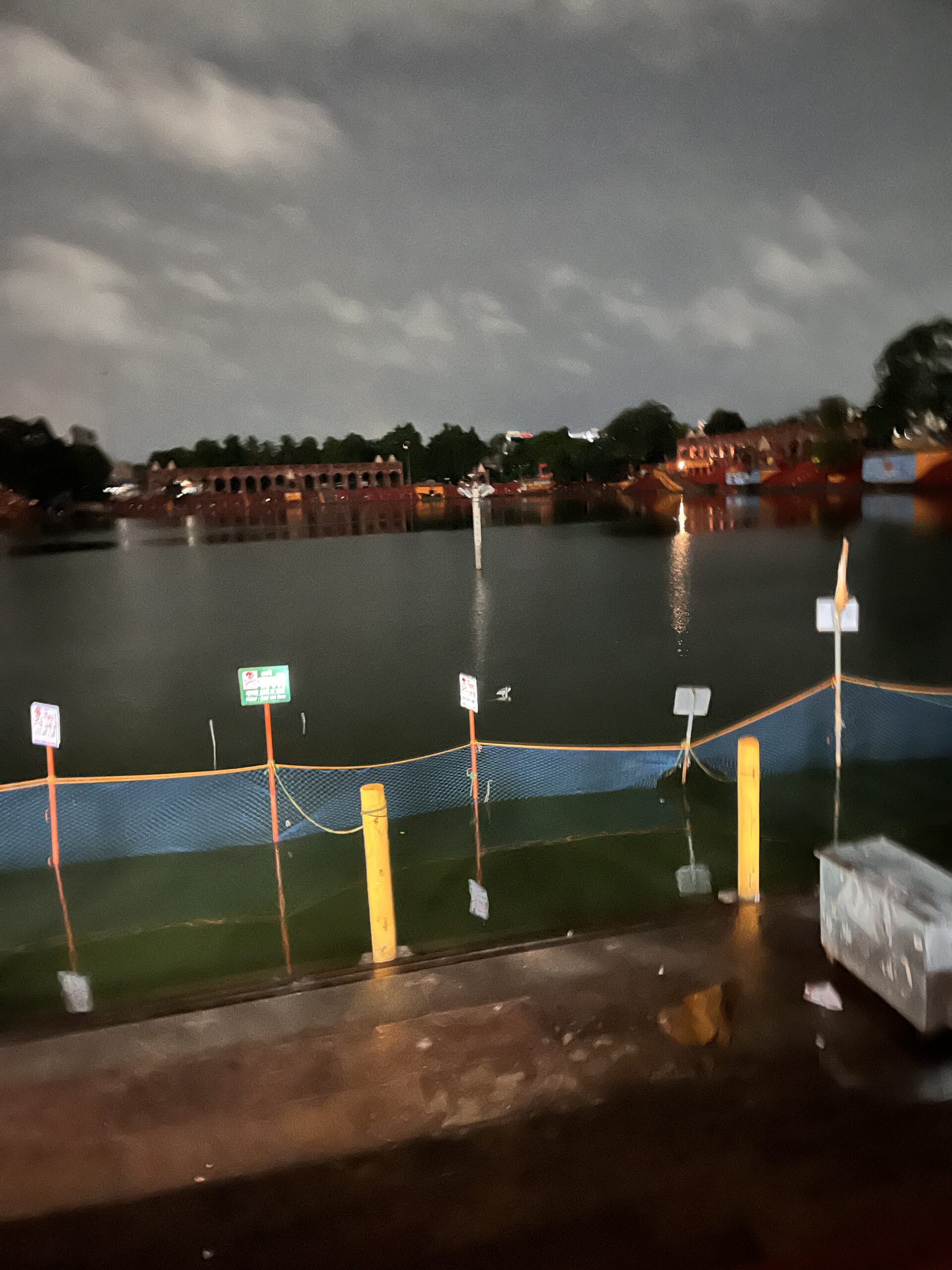

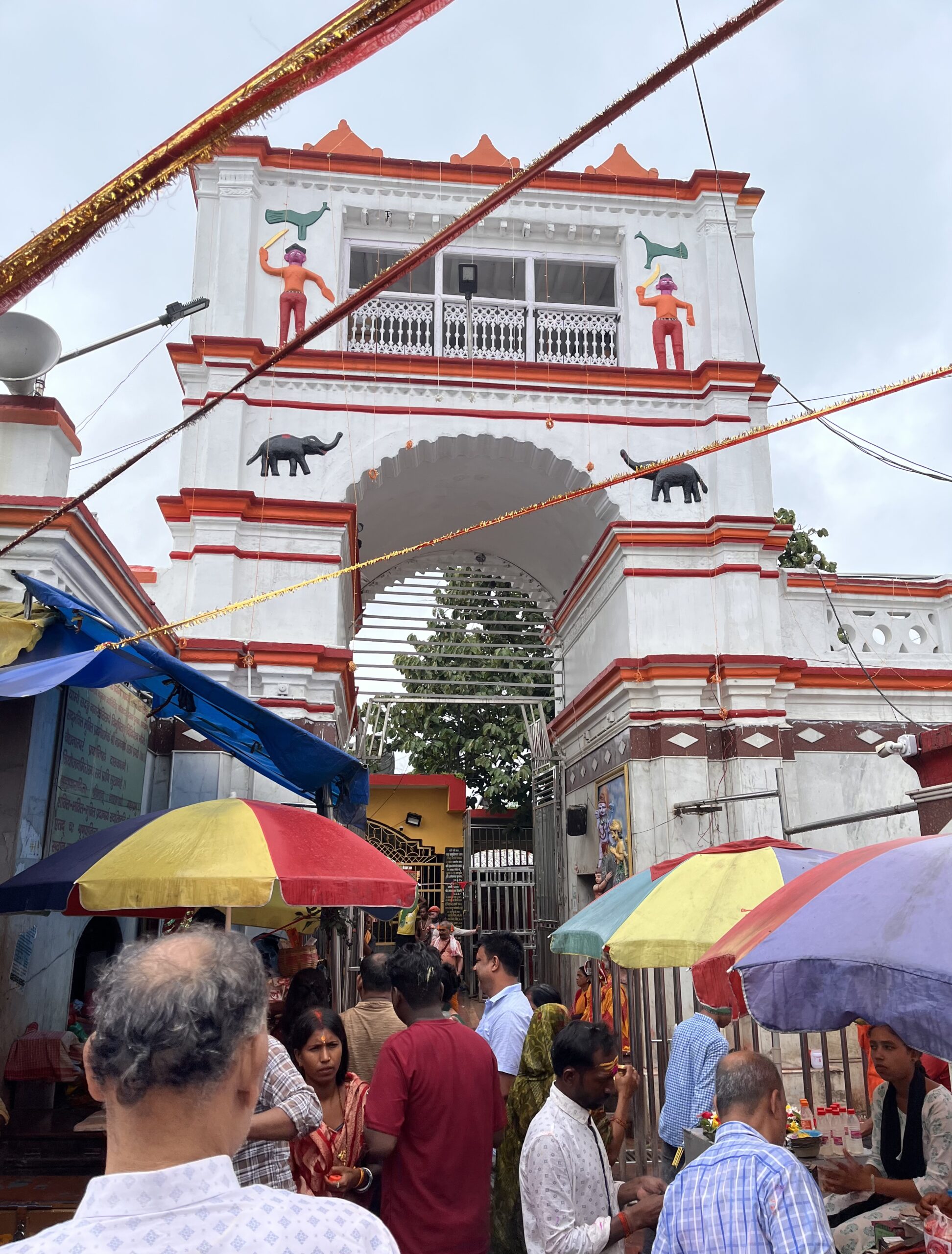

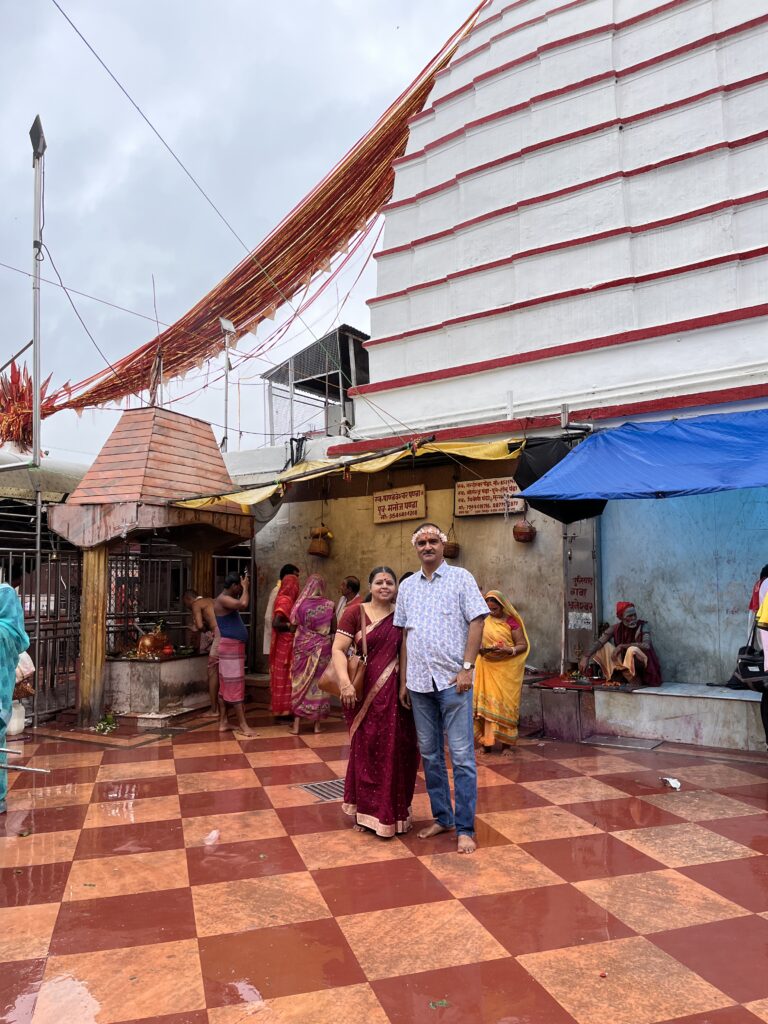
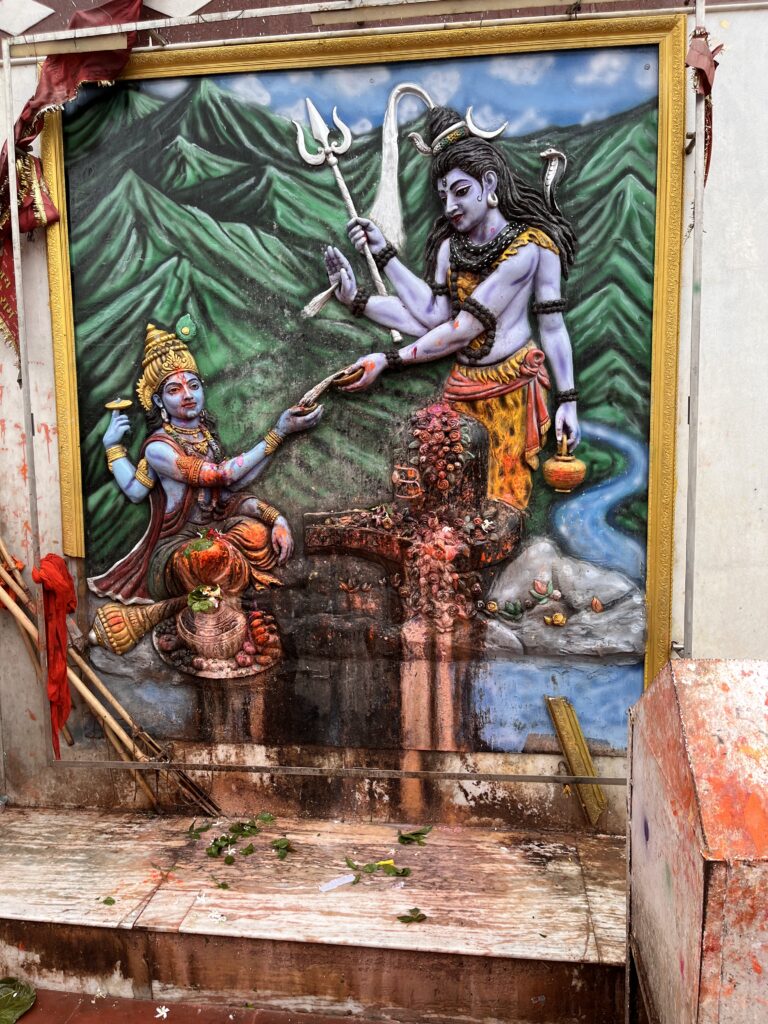
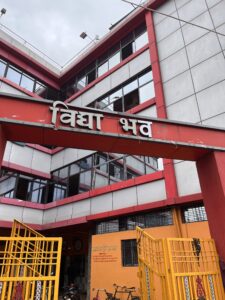
Bala boss tussi great ho. You penned the article so well with equally beautiful pics and detailed information description that could feel my virtual presence in your journey. Looking forward to many more such experiences ..